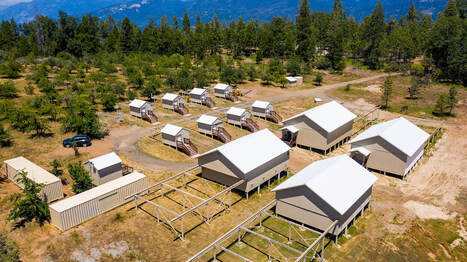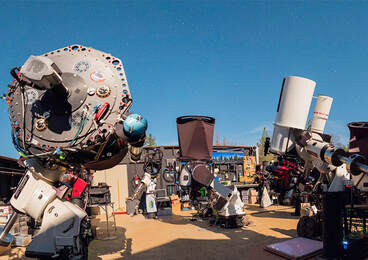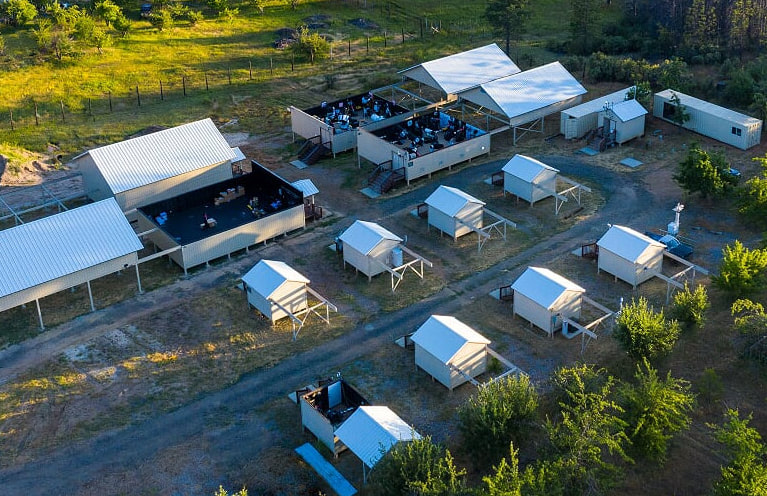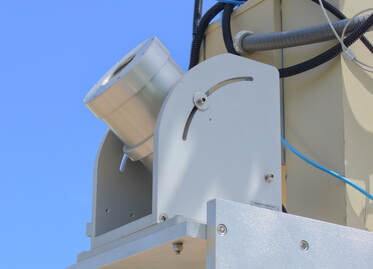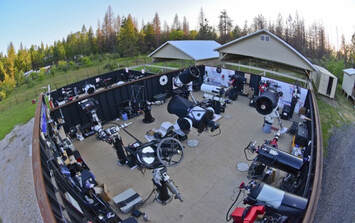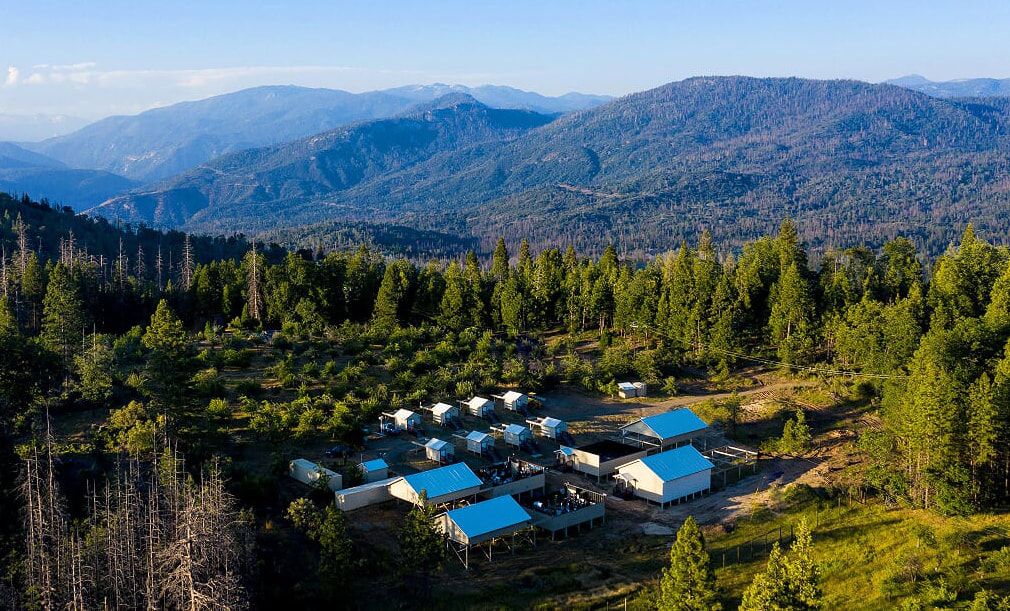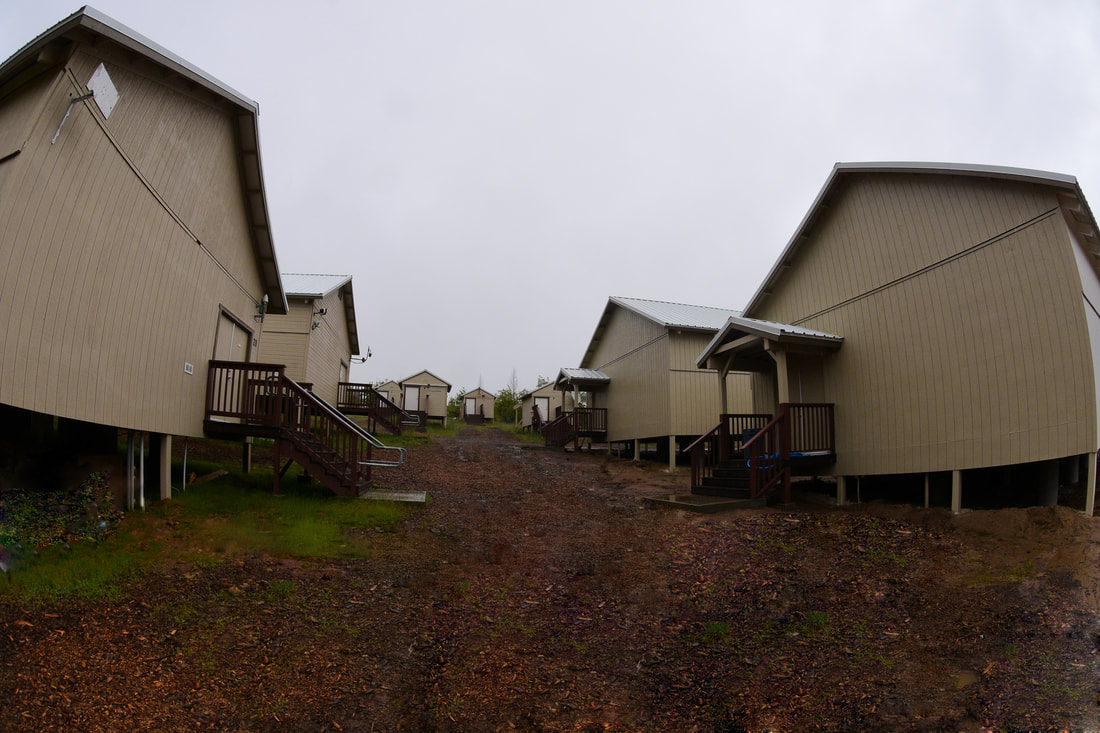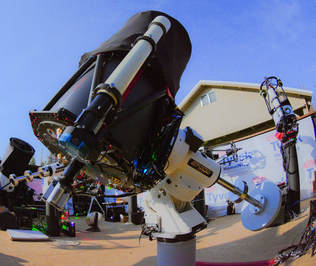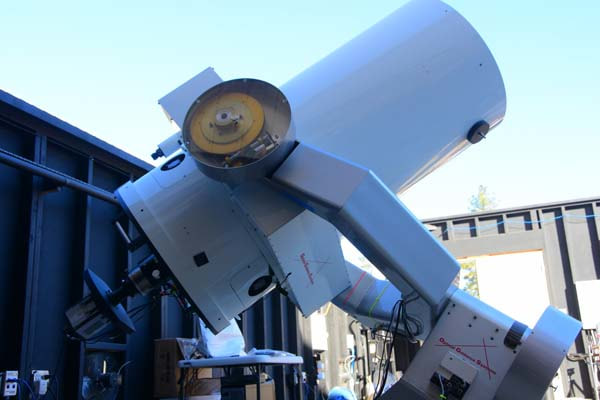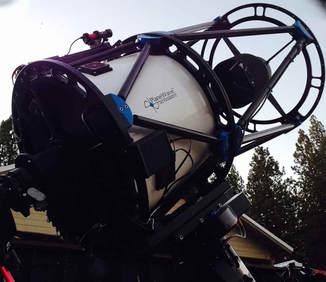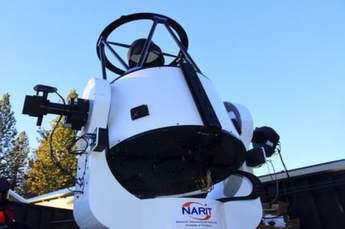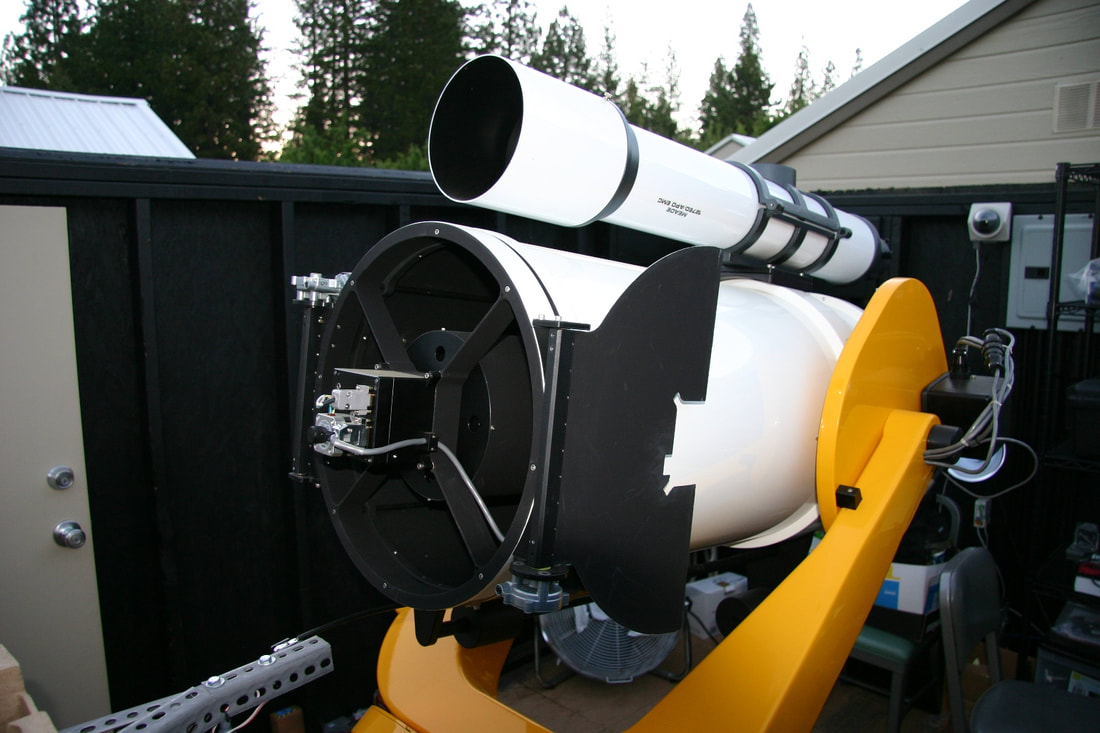Sierra Remote Observatories: An Ideal Site for Astronomers, Space Industry Professionals and Astrophotographers
An Introduction to Sierra Remote Observatories
SRO is a group of remote observatories located in the Sierra Nevada Mountains and dedicated to remote and robotic data acquisition, imaging, satellite tracking and communications. At SRO we have been hosting telescopes continuously since 2007. We are uniquely located in the Sierra Nevada Mountains in an area with excellent imaging conditions including:
• one arcsecond summer seeing
• dark skies
• a very low incidence of thunderstorms
• no summer monsoons
• average wind speeds of only 1 mph
• maximum wind gusts averaging only 10 mph
• an average of 290 clear nights per year.
We have easy access, being only one hour from the Fresno-Yosemite International Airport and 4 hours from Los Angeles or San Francisco, by car. We have robust, secure and fast fiber optic internet with satellite back up, network redundancy and security. Our standard internet speed is 500 mps (full dublex) with gigabit speeds and dedicated fiber available. We have on-site technicians for daily repair and assistance. Roof control is based on on-site live weather telemetry. Clients have access to roof position files so they can optimize their imaging time and also have access to weather/seeing condition files (Boltwood files) which can be embedded into their fits files. Our systems are redundant, incuding dual secure firewalls, a Generac all-site generator and fiber optic internet backup with Starlink satellite internet access. Our clients include astrophysicists, space industry professionals, astronomical institutes and advanced amateur imagers. Contact us if you have any questions or if you are looking for a unique site to place your telescope. Our email address is [email protected].
Keith Quattrocchi
President and Founder
Sierra Remote Observatories
Read More
• one arcsecond summer seeing
• dark skies
• a very low incidence of thunderstorms
• no summer monsoons
• average wind speeds of only 1 mph
• maximum wind gusts averaging only 10 mph
• an average of 290 clear nights per year.
We have easy access, being only one hour from the Fresno-Yosemite International Airport and 4 hours from Los Angeles or San Francisco, by car. We have robust, secure and fast fiber optic internet with satellite back up, network redundancy and security. Our standard internet speed is 500 mps (full dublex) with gigabit speeds and dedicated fiber available. We have on-site technicians for daily repair and assistance. Roof control is based on on-site live weather telemetry. Clients have access to roof position files so they can optimize their imaging time and also have access to weather/seeing condition files (Boltwood files) which can be embedded into their fits files. Our systems are redundant, incuding dual secure firewalls, a Generac all-site generator and fiber optic internet backup with Starlink satellite internet access. Our clients include astrophysicists, space industry professionals, astronomical institutes and advanced amateur imagers. Contact us if you have any questions or if you are looking for a unique site to place your telescope. Our email address is [email protected].
Keith Quattrocchi
President and Founder
Sierra Remote Observatories
Read More
What's New at Sierra Remote Observatories
|
New Projects at SRO
Sierra Remote Observatories was founded in 2007 and has continued to grow, expand and improve itself. Two years ago two new large muti-telescope buildings were added to SRO, and both are nearly full. As a result we are placing two additional mid-sized multi-telescope buildings at SRO. Construction will begin in the next few weeks. Other recent updates over the past few years includes our fiber optic internet upgrade. We now have standard 500 mbps full duplex with gigabit speeds and dedicated fiber available. We have an on site generator, redundant and secure VPN access, and Skylink as our satellite internet backup. Our roof control continues to utilize a modified version of the highly reliable and well designed SkyRoof and SkyAlert. Weather condition and roof position files are available to our clients. www.sierra-remote.com |
Continued Growth and Expansion at SRO When SRO saw first light in 2007 there were only 8 individual observatories, three of which were used by the original owners and founders of Sierra Remote Observatories. With SRO's excellent seeing conditions we were producing high quality images and within months the 8 observatories were leased with requests for more space. As a result we put up our first two multi-telescope observatories, each designed to house up to 14 telescopes. Within a few years these filled with continued demand. As a result we have constructed two additional new multi-telescope buildings and added a new headquarters building. These multi-telescope buildings can house scopes with apertures up to 0.75 meters. These are now completed and operational, with more than 90% of space currently filled. Two additional medium sized multi-telescope buildings we be constructed and operational later this year, each housing an additional 8 telescopes In addition, larger meter class telescopes can be placed in dome or roll-off roof observatories on site. In addition, an adjacent 5 acre site with the SRO headquarters building is now completed and has a shared client workroom with amenities. We will continue to upgrade and improve the infrastructure of SRO in order to provide an efficient, robust and comfortable environment for remote data acquisition, imaging, satellite tracking and space communications. www.sierra-remote.com |
Infrastructure Updates
At SRO we are continually improving and updating the infrastructure that allows uninterrupted data collection and imaging. We have fast fiber optic internet recently upgraded to a standard 500 mbps full duplex with gigabit speeds and dedicated fiber available. Our fiber is backed up by Starlink. VPN access is performed through or dual (redundant) firewall. There is now 24/7 surveillance at SRO. SRO has full time technical support with technicians on site every day of the year and available for emergency services 24/7. Most technical problems can be fixed on site or shipped out and reassembled by our staff. We supply two hours per month of free support with additional support available, and will, without charge, assist you with your telescope installation and updating your equipment. Thereafter our staff will be your "eyes, ears and hands" on-site. Our goal is to make your remote data acquisition and imaging experience as trouble free as possible. We have added a whole site Generac generator so that power will be present in the event of a PG&E power failure. In addition, we have acquired a new on-site headquarters with amenities for our clients.. At SRO, we are continuously improving the extent and quality of our infrastructure so that you can focus on trouble free satellite tracking, space communications, data collection and astronomical imaging. Read More |
New SRO Headquarters, Backup Generator AND New Multi-telescope Buildings 11 and 12 Now Operational
Two Additional Multi-telescope buildings and Warm Room in Progress
Two Additional Multi-telescope buildings and Warm Room in Progress
SRO has acquired land adjacent to the current observatory where a new headquarters building is now available to our clients. The SRO Headquarters Building contains client amenities, which will be transferred to an on-site dedicated Warm Room in the future. This client facilities will be helpful to those working on hot days or cold evenings, extended or overnight hours. The client station has a dedicated computer, internet access, printer, restroom, refrigerator and bunk bed.
A Generac all-site backup propane powered generator has been operational for the past year. This has ensured uninterrupted use of the site during PG&E power outages.
Additionally, two large custom designed multi-telescope buildings, designated building 11 and 12, were completed last year and are in use at SRO. Building 11 is already full, with buildiing 12 about 95% full. These large structures, each 40 x 30 foot with 10 foot ceilings. These buildings were constructed for larger telescopes, with nearly 10 feet of space between each telescope. This allows us to easily handle larger telescopes, such as 28" or 32" telescopes in equatorial or Alt-Az configuration. Two additional multi-telescope buildings (Buildings 13 and 14) will be constructed later this year, to ensure space will be available for new clients.
Larger, meter class telescopes, can placed in individual domes or individual roll-off roof observatories at SRO.
In addition to these new buildings, allowing for immediate availability for those looking for a spot at SRO, we continue to update our infrastructure. Currently we have fast fiber optic internet (recently increased to a standard 500 mbps duplex and the option of dedicated fiber at gigabit speeds), an improved and standardized roof control system, emergency satellite internet backup (now using Skylink) and 24/7 security. We have two full time technicians on site 7 days a week, with urgent or emergency help available 24 hours a day.
Our goal at SRO has always been to build a site which is as trouble free and seamless as possible, so our clients can focus on unencumbered satellite tracking, space communications, data acquisition and astronomical imaging. We continue to strive to be the premiere site for astronomical data collection and imaging for astronomers, space industry professionals and astrophotographers.
Keith Quattrocchi
President and Founder
Sierra Remote Observatories
A Generac all-site backup propane powered generator has been operational for the past year. This has ensured uninterrupted use of the site during PG&E power outages.
Additionally, two large custom designed multi-telescope buildings, designated building 11 and 12, were completed last year and are in use at SRO. Building 11 is already full, with buildiing 12 about 95% full. These large structures, each 40 x 30 foot with 10 foot ceilings. These buildings were constructed for larger telescopes, with nearly 10 feet of space between each telescope. This allows us to easily handle larger telescopes, such as 28" or 32" telescopes in equatorial or Alt-Az configuration. Two additional multi-telescope buildings (Buildings 13 and 14) will be constructed later this year, to ensure space will be available for new clients.
Larger, meter class telescopes, can placed in individual domes or individual roll-off roof observatories at SRO.
In addition to these new buildings, allowing for immediate availability for those looking for a spot at SRO, we continue to update our infrastructure. Currently we have fast fiber optic internet (recently increased to a standard 500 mbps duplex and the option of dedicated fiber at gigabit speeds), an improved and standardized roof control system, emergency satellite internet backup (now using Skylink) and 24/7 security. We have two full time technicians on site 7 days a week, with urgent or emergency help available 24 hours a day.
Our goal at SRO has always been to build a site which is as trouble free and seamless as possible, so our clients can focus on unencumbered satellite tracking, space communications, data acquisition and astronomical imaging. We continue to strive to be the premiere site for astronomical data collection and imaging for astronomers, space industry professionals and astrophotographers.
Keith Quattrocchi
President and Founder
Sierra Remote Observatories
Above: SRO with two additional multi-telescope observatories (two large observatories in right foreground). All buildings are fully operational, with over 70 telescopes in use. The site has been continuously operational since first light in 2007.
Contact Information and Images from SRO
|
Fisheye view of SRO with the 4 larger multi-telescope buildings in the foreground and some of the 8 smaller private observatories in the background.
The Astronomical Telescope of the University of Stuttgart (ATUS) was established by the University's Institute of Space Systems with support of the Stratospheric Observatory for Infrared Astronomy (SOFIA) and funded by the DLR Space Administration.
The Korean Astronomy and Space Sciences Institute (KASSI's) 24" OGS. They are conducting polarimetry of the moon's surface.
|
The SRO newsletter is sent out semiannually. Our goal is to keep clients and interested professionals aware of changes, updates and projects at SRO. Feel free to contact us by phone or email at any time and with any questions you may have. Our phone numbers and email are listed below : Contact Information: Corporate Address Sierra Remote Observatories 42120 Bald Mountain Road Auberry, CA 93602 Phone: 530-401-0643 [email protected] Observatory Location: Auberry, California General Inquiries: [email protected] Founder and President Keith Quattrocchi [email protected] 530-401-0643 Technical Support: Evan Cornelson [email protected] & Sam Miller [email protected] Website: www.sierra-remote.com |
The iTelescope.Net's 24" Planewave CDK.
The National Astronomical Research Institute of Thailand's (NARIT's) 0.7 meter Planewave telescope (CDK 700).
Dr. Fred Ringwald's 16" DFM Ritchey-Chretien Telescope. Dr. Ringwald, an astrophysicist at Fresno State University, has published several peer reviewed articles on cataclysmic variables with data from SRO. These papers have been cited in 123 refereed scientific journals as of January of 2022.
|

